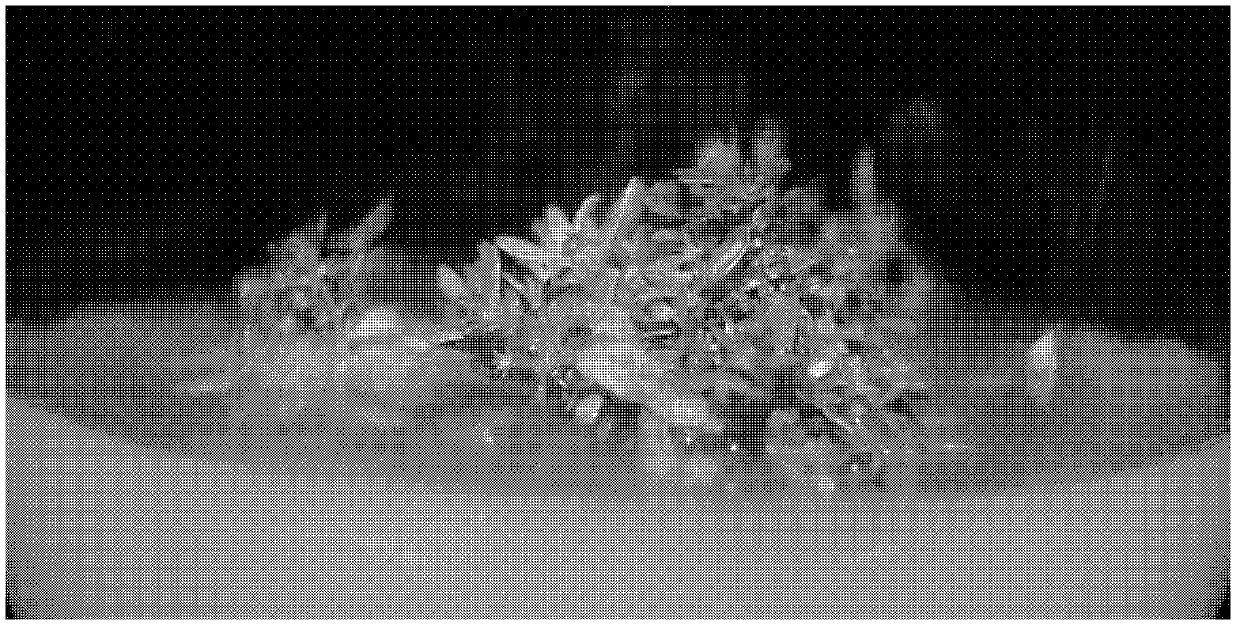Transformation method of eucalyptus grandis
A technology of Eucalyptus gigantea and gene, applied in the field of Eucalyptus transformation
- Summary
- Abstract
- Description
- Claims
- Application Information
AI Technical Summary
Problems solved by technology
Method used
Image
Examples
Embodiment 1
[0065] The target gene AmCBL1 was connected to the expression vector pCAMBIA1301 containing 6-phosphomannose isomerase (PMI), and the vector was introduced into Agrobacterium tumefaciens EHA105. Shake the Agrobacterium in YEB medium containing 100 mg / mL kanamycin and 50 mg / mL rifampicin at 28°C at 180 rpm in the dark until the OD value is 0.5-0.6; 8000 rpm , centrifuged for 10 minutes, pelleted and collected bacteria. Use sucrose-free MS liquid medium containing AS 50mg / L, MES 150mg / L and galactose 1.8g / L to suspend the bacteria, and the OD value of the suspended bacteria is still adjusted to 0.5-0.6; Stem segments, cut to about 0.5 cm, were inoculated in pre-cultured callus induction medium containing 0.5 mg / L of Thidiazuron (hereinafter referred to as TDZ), 1-naphthlcetic acid (hereinafter referred to as NAA) ) 0.1mg / L, sucrose 30g / L and agar 7g / L MS medium, in a culture room with a temperature of 25±2°C, culture in dark for 1 day for pre-cultivation; For the pre-cultivate...
Embodiment 2
[0067]The target gene AmCBL1 was connected to the expression vector pCAMBIA1301 containing 6-phosphomannose isomerase (PMI), and the vector was introduced into Agrobacterium tumefaciens EHA105. Shake the Agrobacterium in YEB medium containing 100 mg / mL kanamycin and 50 mg / mL rifampicin at 28°C, 180 rpm, in the dark until the OD value is 0.4-0.5; 8000 rpm , centrifuged for 10 minutes, pelleted and collected bacteria. Use sucrose-free MS liquid medium containing AS 50mg / L, MES 150mg / L and galactose 1.8g / L to suspend the bacteria, and the OD value of the suspended bacteria is still adjusted to 0.4-0.5; Stem segments, cut to about 0.5 cm, were inoculated in pre-cultured callus induction medium containing 0.5 mg / L of Thidiazuron (hereinafter referred to as TDZ), 1-naphthlcetic acid (hereinafter referred to as NAA) ) 0.1mg / L, sucrose 30g / L and agar 7g / L MS medium, in a culture room with a temperature of 25±2°C, culture in dark for 1 day for pre-cultivation; For the pre-cultivated ...
Embodiment 3
[0069] The target gene AmCBL1 was connected to the expression vector pCAMBIA1301 containing 6-phosphomannose isomerase (PMI), and the vector was introduced into Agrobacterium tumefaciens EHA105. Shake the Agrobacterium in YEB medium containing 100 mg / mL kanamycin and 50 mg / mL rifampicin at 28°C, 180 rpm, in the dark until the OD value is 0.4-0.5; 8000 rpm , centrifuged for 10 minutes, pelleted and collected bacteria. Use sucrose-free MS liquid medium containing AS 50mg / L, MES 150mg / L and galactose 1.8g / L to suspend the bacteria, and the OD value of the suspended bacteria is still adjusted to 0.4-0.5; Stem segments, cut to about 0.5 cm, were inoculated in pre-cultured callus induction medium containing 0.5 mg / L of Thidiazuron (hereinafter referred to as TDZ), 1-naphthlcetic acid (hereinafter referred to as NAA) ) 0.1mg / L, sucrose 30g / L and agar 7g / L MS medium, in a culture room with a temperature of 25±2°C, culture in dark for 1 day for pre-cultivation; The pre-cultured Eucal...
PUM
 Login to View More
Login to View More Abstract
Description
Claims
Application Information
 Login to View More
Login to View More - R&D
- Intellectual Property
- Life Sciences
- Materials
- Tech Scout
- Unparalleled Data Quality
- Higher Quality Content
- 60% Fewer Hallucinations
Browse by: Latest US Patents, China's latest patents, Technical Efficacy Thesaurus, Application Domain, Technology Topic, Popular Technical Reports.
© 2025 PatSnap. All rights reserved.Legal|Privacy policy|Modern Slavery Act Transparency Statement|Sitemap|About US| Contact US: help@patsnap.com



